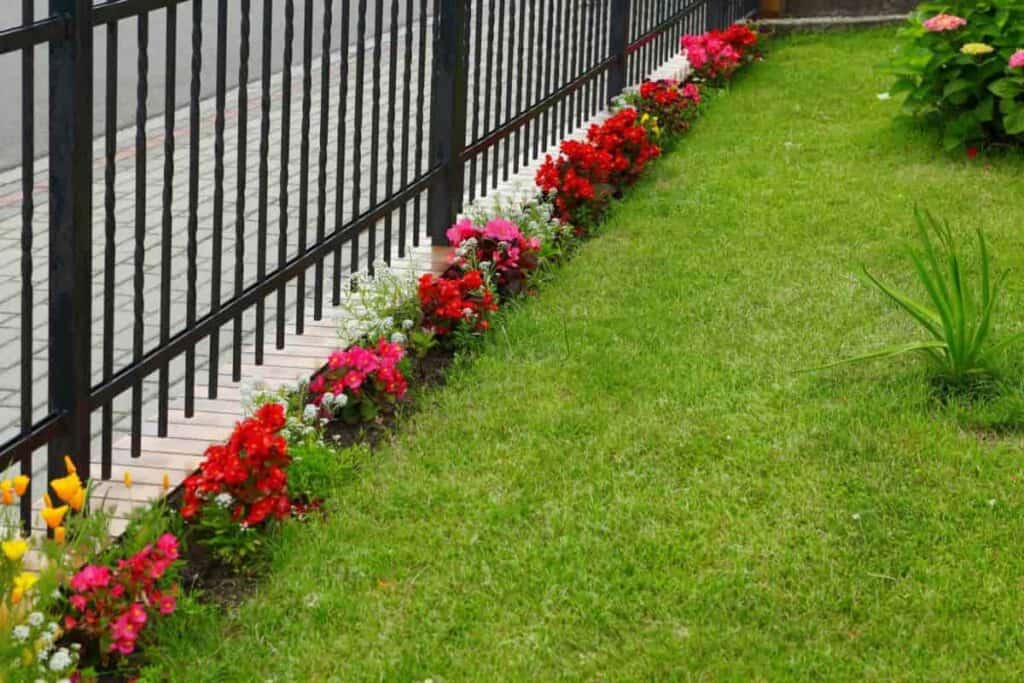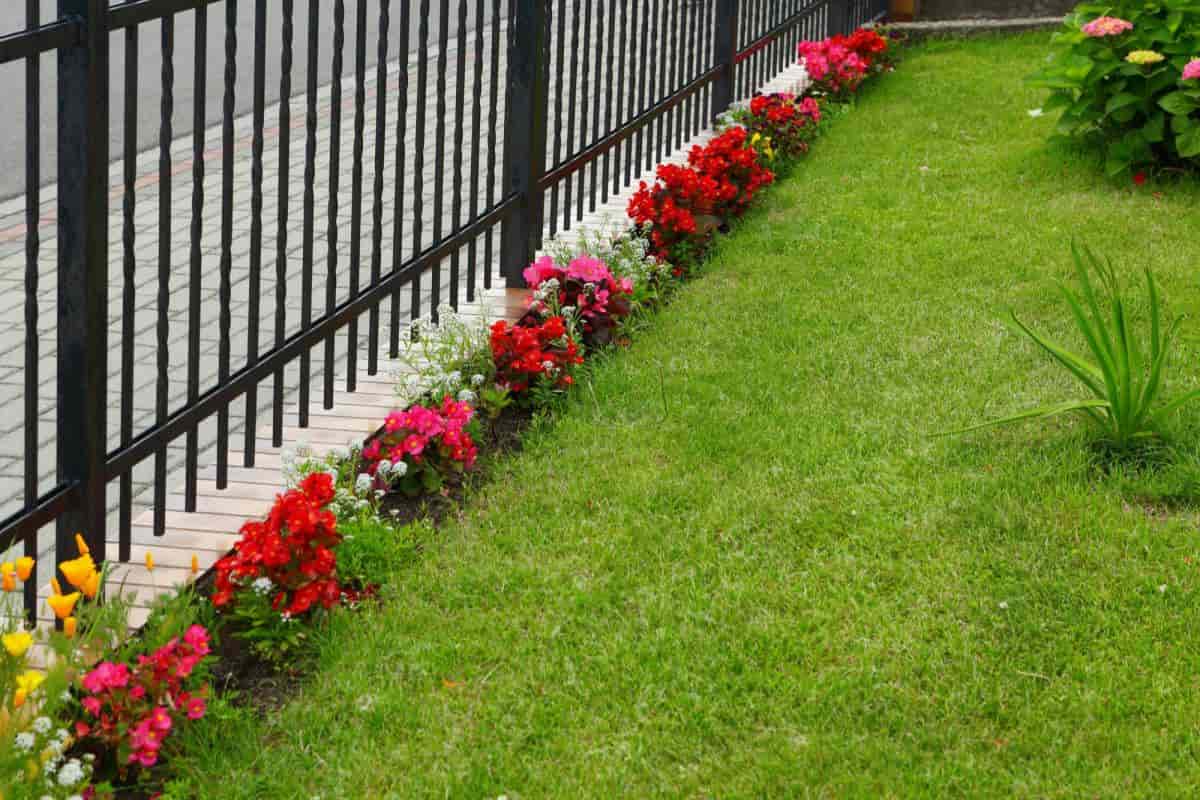Making a city lawn is indeed a problem for gardeners, homeowners, and park superintendents.
With dogs prowling around and other undesirable company, it is something of a stunt to make a good lawn, And yet, a satisfactory lawn is the starting point for any successful garden.

New Lawns in Spring or Fall
New lawns can be made in the spring or fall, although fall is considered the best season of the year in the Eastern section of this country.
However, no matter when you make a new lawn, specific steps must be followed if you want a deep root system and a thick, healthy top growth of sod.
The success or failure of any lawn is dictated by the care and intelligence used in preparing the ground in which it is to grow.
Either clay or sandy loam containing an abundance of humus is the preferred soil. It. should have a granular texture and be friable enough to retain moisture remaining sticky but not becoming powdery when it dries.
Such soil, 6″ to 8″ inches deep, will provide a most favorable home for the grassroots. If the sub-soil needs correcting, it should be done at the time of setting the grade.
Soil Testing Is Worthwhile
How much loam and native peat to Auld to a heavy or thin sub-soil is an individual problem. I advise having samples of soil taken from different parts of the lawn and having it tested to see what is lacking.
For feeding lawns, a complete fertilizer, such as 8-0-2, is usually best for established grass. We apply fertilizer at the rate of 20 pounds per 100 square feet in the spring, 10 to 15 pounds in June, and 10 to 15 pounds in the fall.
A soil with a pit of 7.0 is neutral; most grasses like a pH of 6.5 to 5.5. Kentucky Blue Grass is usually a neutral grass, but bent grasses are happy on the acid side.
A good mixture of grasses that stand well under city conditions is composed of Chewings Fescue, Domestic Rye Grass, and Kentucky Bluegrass. Halle(‘ Fescue, Red Top and Colonial Bent. Sow the seed at four to five pounds per 1000 square feet.
Sowing By Hand
Sow half lengthwise and half crosswise. Your local seedsman can provide you with the best seed.
It is wise to grub-proof your lawn before sowing with an arsenate of lead. DDT or a mixture of fertilizer with grub-proofing contents.
Roll to imbed the seed, and do this before and after sowing the seed to assure perfect contact between seed and soil.
This step is essential and should not be omitted. Then water thoroughly, using a very fine spray.
Continue to water daily until seed germination is complete; then water as needed, but always thoroughly; light sprinkling encourages shallow roots.
Regular Care on Established Lawns
Established lawns need regular care if they are to remain beautiful. This care includes such things as plant feeding, reseeding, and proper mowing and watering.
In the Eastern sections, the fall offers an ideal season for renovating established lawns since it enables gardeners to combine an effective weed control program with lawn care.
I give three feedings to our lawn. I have used such fertilizers as 9-6-6, 8-6-2, 5-10-5, and cottonseed meat in the early spring, the last of Mardi, or the first of April.
I always test the soil. Then in June, I apply a 4-12-4 formula at the rate of 10 pounds to every 1000 square feet.
Do not stimulate your lawn during July and August unless you are forced to do so. In September, I give it either 4-12-4 or a bone meal. This seems to take care of the root system and keeps the turf flourishing.
Feeding Lawn
When feeding a lawn in the spring or any time, ensure your grass is dry; then spread the dough and soak it in. I have never burned a lawn with fertilizer because I have always looked out for that possibility.
In mowing, do not cut your grass shorter than 1 1/2″ inches. Your last cutting of the season is usually rather short, so that leaves will not lie and smother the grass during the Winter; this practice prevents snow mold from developing.
Lawn Problems
A dense, vigorous turf is the best insurance against weed infestation. A few years ago, weeds were a major lawn problem.
Today, however, it is no longer necessary to spend hours of back-breaking labor pulling and digging troublesome weeds.
With the use of various chemicals, dandelions, common plantain, wild carrots, and chickweed are easily eliminated, but be sure to “stick” to the instructions on the container.
Crabgrass control, in many instances, is a little more difficult, but I have had fairly good results with potassium cyanate used at the proper time.
Chinch bugs on established lawns should be looked for in June and early July and again in August and September.
The use of a stomach poison is ineffective as the chinch bug is a true sucking insect and so does not chew the vegetation.
The method of directly checking the invasion is by contacting poisons that suffocate the chinch bug. Finely-ground tobacco dust with chlordane does an excellent job and does not bum the grass.
The lawn should be cut closely before treatment, so the dust will settle close to the grass crowns; brush the dust in briskly with a corn broom. Damaged areas should be raked out and reseeded with a good lawn seed in the usual manner.
Japanese Beetle Damage
During the past several years, Japanese beetles have damaged turf considerably. The grass turns brown and dies.
It is severed at the roots so that it can be rolled up like a carpet. If the sod is removed at the right time, a colony of the feeding grubs will be found.
Flocks of birds, such as grackles and starlings, often disclose the presence of grubs. In the country, skunks are fond of the fares, so where there are damaged lawns, the way to get rid of them is to destroy the grubs.
To control, use an arsenate of lead, chlordane, or a fertilizer with grub-proofing contents.
44659 by James Sutherland
